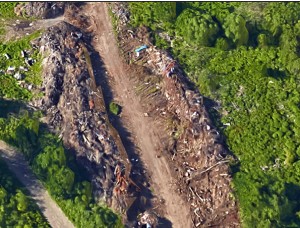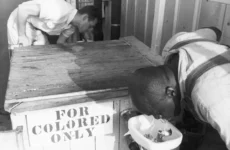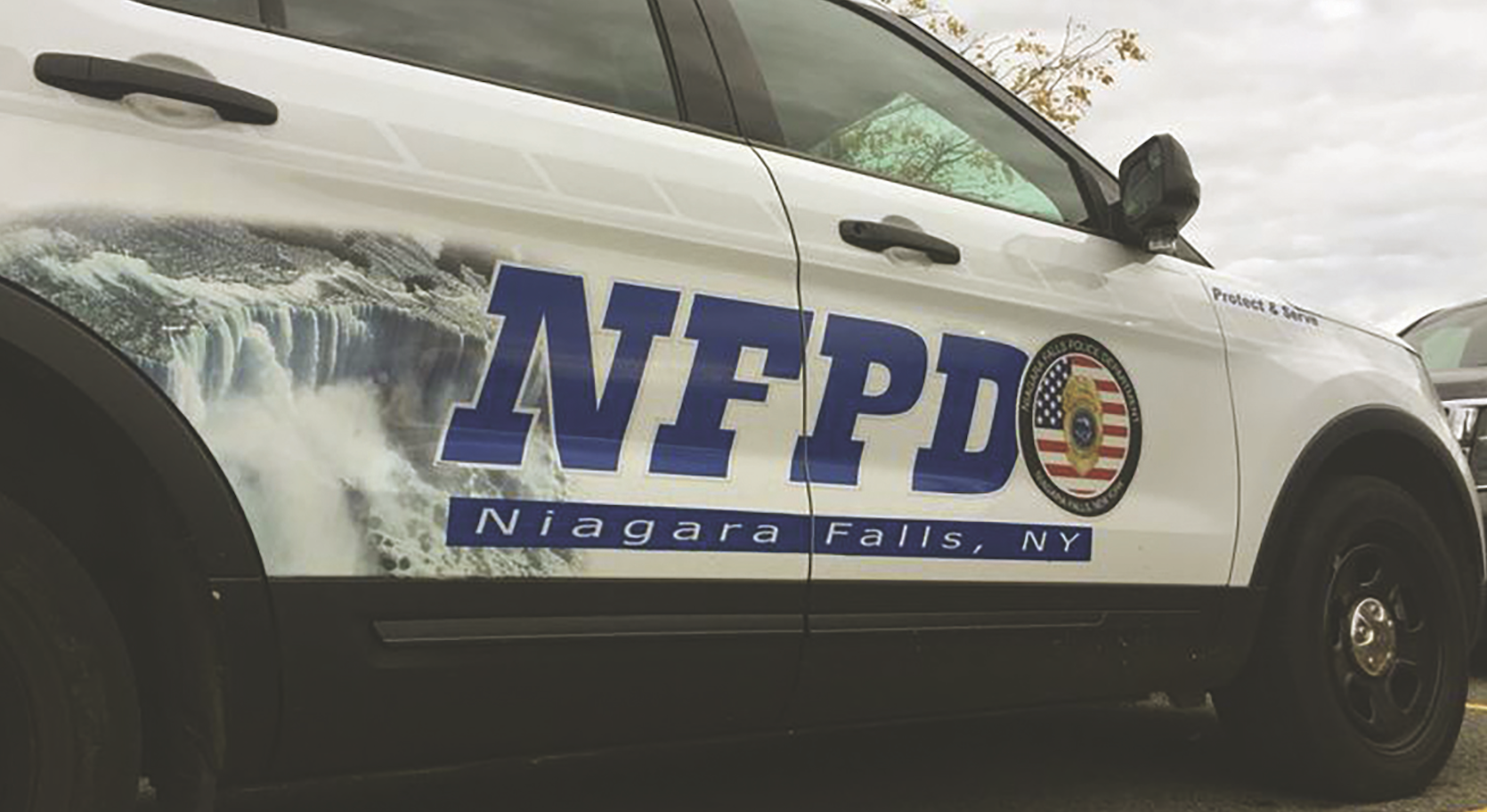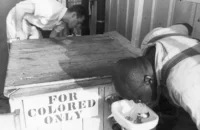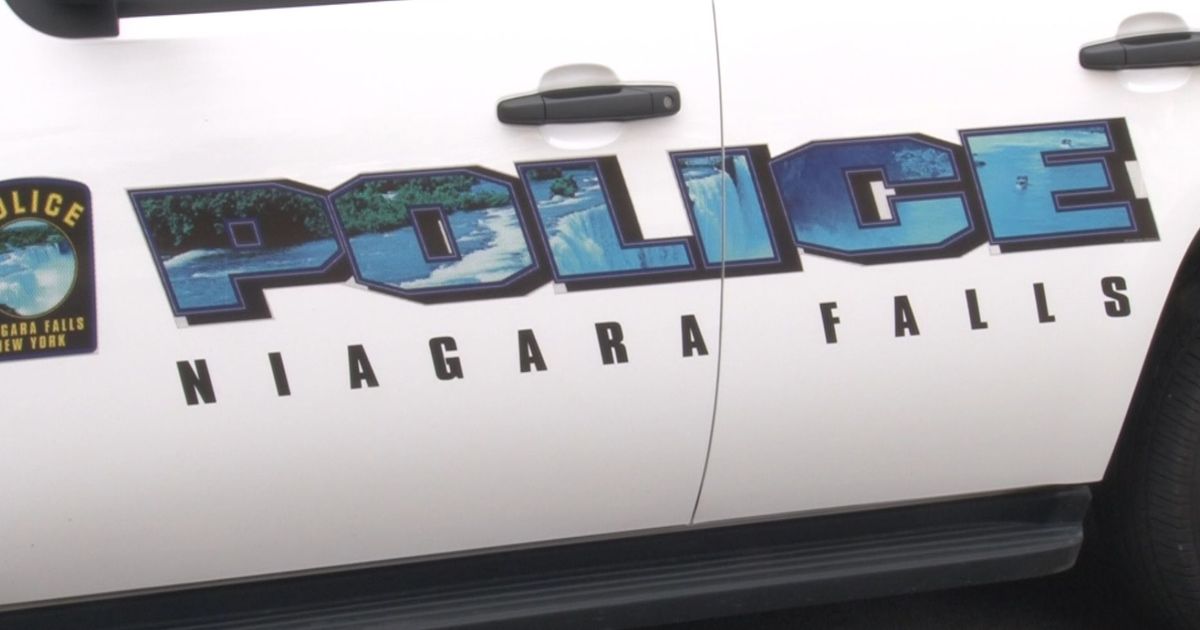In our business, people frequently come to us as whistleblowers troubled by what they perceive as official misconduct and yet afraid that if they blow the whistle at work they will be retaliated against.
It is necessary for us to protect their identities.
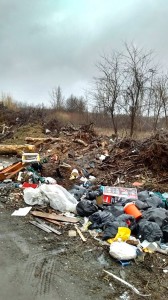 This week two such people came to us to inform us about the so-called composting site on Niagara Falls Department of Public Works managed property near the corner of Porter and New Road which has transmuted into what may well be an illegal dumping grounds for both the city and for private individuals using the site to get rid of all manner of debris that should not be dumped there.
This week two such people came to us to inform us about the so-called composting site on Niagara Falls Department of Public Works managed property near the corner of Porter and New Road which has transmuted into what may well be an illegal dumping grounds for both the city and for private individuals using the site to get rid of all manner of debris that should not be dumped there.
This is a wakeup call.
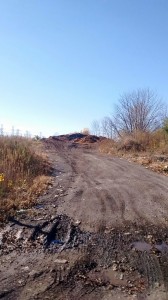 Our whistleblowers, who must remain anonymous because they work for the city and would risk being fired if it were known that they were telling the public about this mess, came to us because they said they are genuinely concerned about the conditions of this dump site and say that the City of Niagara Falls has been directly engaged in illegal dumping on the city-owned land.
Our whistleblowers, who must remain anonymous because they work for the city and would risk being fired if it were known that they were telling the public about this mess, came to us because they said they are genuinely concerned about the conditions of this dump site and say that the City of Niagara Falls has been directly engaged in illegal dumping on the city-owned land.
Many residents have become recently familiar with the very site in question after pictures posted on Craiglist of dog carcasses there caused a swirl of controversy earlier this month and significant media attention.
The makeshift landfill – formerly wetlands – has not been legally sanctioned and does not have containment mechanisms (like liners or containment walls) that landfills are required to possess.
The property was originally owned by the New York State Power Authority, but was deeded to the City after the 2007 relicensing of the power project. But the DPW began using the site long before – under former Mayor James Gallie.
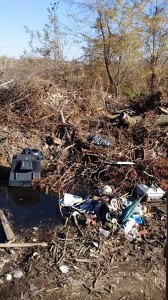 At the time, it seemed to make sense that biodegradables be diverted from costly landfills. The dumping of leaves, brush, and dead trees quickly transformed the site from wetlands to a large composting site.
At the time, it seemed to make sense that biodegradables be diverted from costly landfills. The dumping of leaves, brush, and dead trees quickly transformed the site from wetlands to a large composting site.
It’s funny how things evolve.
In time, DPW’s street cleaning unit found it convenient to dump ‘sweeper dirt’ aggregated from regular street cleaning on the site alongside the composting leaves and other vegetation.
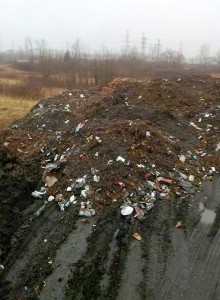 Dirt swept from the streets contain non- biodegradable and/or hazardous waste, such as needles, condoms, drug bags, litter, and discarded consumer goods. As well as loose millings and/or blacktop.
Dirt swept from the streets contain non- biodegradable and/or hazardous waste, such as needles, condoms, drug bags, litter, and discarded consumer goods. As well as loose millings and/or blacktop.
The New Road dumping ground evolved further, and soon enough it became home to old blacktop and then demolition debris as the piles grew higher.
Along the way more items were added – and it appears that dead animals were tossed there – from dead dogs to dead deer.
Certain members of the public evidently also joined in transforming the site to a general dump; the former wetlands is now strewn with kitchen cabinets, defunct appliances, mattresses, old televisions, and drywall as pictures show.
Even river sludge from the dredging of Strawberry Island was dumped on the site, our whistleblowers say.
“If it gets too high, someone is going to notice it,” an official with management responsibilities reputedly told DPW workers as he urged them to spread out piles over a greater land mass and not dump too high.
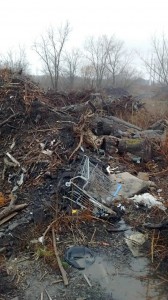 The sources claim Mayor Paul Dyster is well aware of the operation, and that he regularly drives near or by the site.
The sources claim Mayor Paul Dyster is well aware of the operation, and that he regularly drives near or by the site.
“Their standard answer is ‘we can’t afford to use it,” says a DPW employee, after he asked why the city doesn’t send the waste to a proper landfill.
Allied Waste, which operates a landfill along Interstate 190, could take much of the waste but would charge the city for accepting the debris.
One DPW employee claims to have contacted the State Department of Environmental Conservation in November of 2014, but was told that the dumping “might not be a violation.”
“There is nobody trained in their specific job functions, that I know of,” says one source, who attributes much of the department’s mismanagement to a longtime policy of nepotism, patronage hiring, and a lack of training in policy and procedure.
Citing the dead dog carcasses found last month at the site – which Dyster blamed on ‘Friday’ laziness inside the DPW – our sources claim there is no training relating to the disposal of dead animals and that dead animals are regularly dumped there.
In the aftermath of the dead dog controversy, Dyster suggested that the dog should have been double bagged then buried.
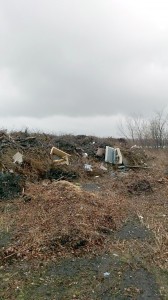 “We have never buried dead animals,” our whistleblowers said. “There are no training policies or procedures and there is, obviously, a health and disease risk of doing that.”
“We have never buried dead animals,” our whistleblowers said. “There are no training policies or procedures and there is, obviously, a health and disease risk of doing that.”
He says that dead animals are bagged and dumped at the site, without being buried, regularly. Other animal carcasses, like deer, are also disposed of at the site.
John Caso, Director of the Department of Public Works, says the site is not an operating landfill and should only be used as a composting site for leaves and brush. He said that he was unaware that DPW’s street cleaning teams are dumping sweeper dirt at the site.
He told the Reporter that discarded televisions and couches are illegal dumping that is not attributable to the Department.
“People are sneaking onto the site in the middle of the night and weekends to dump,” Caso said. “Then there are fly by night contractors who don’t want to dispose of construction debris properly because it costs money. We realize there are a lot of shingles on the site.”
Caso promises that cameras will be installed on the site to prevent such illicit activities in the future.
Neither Mayor Dyster nor the DEC responded to a request for comment.

